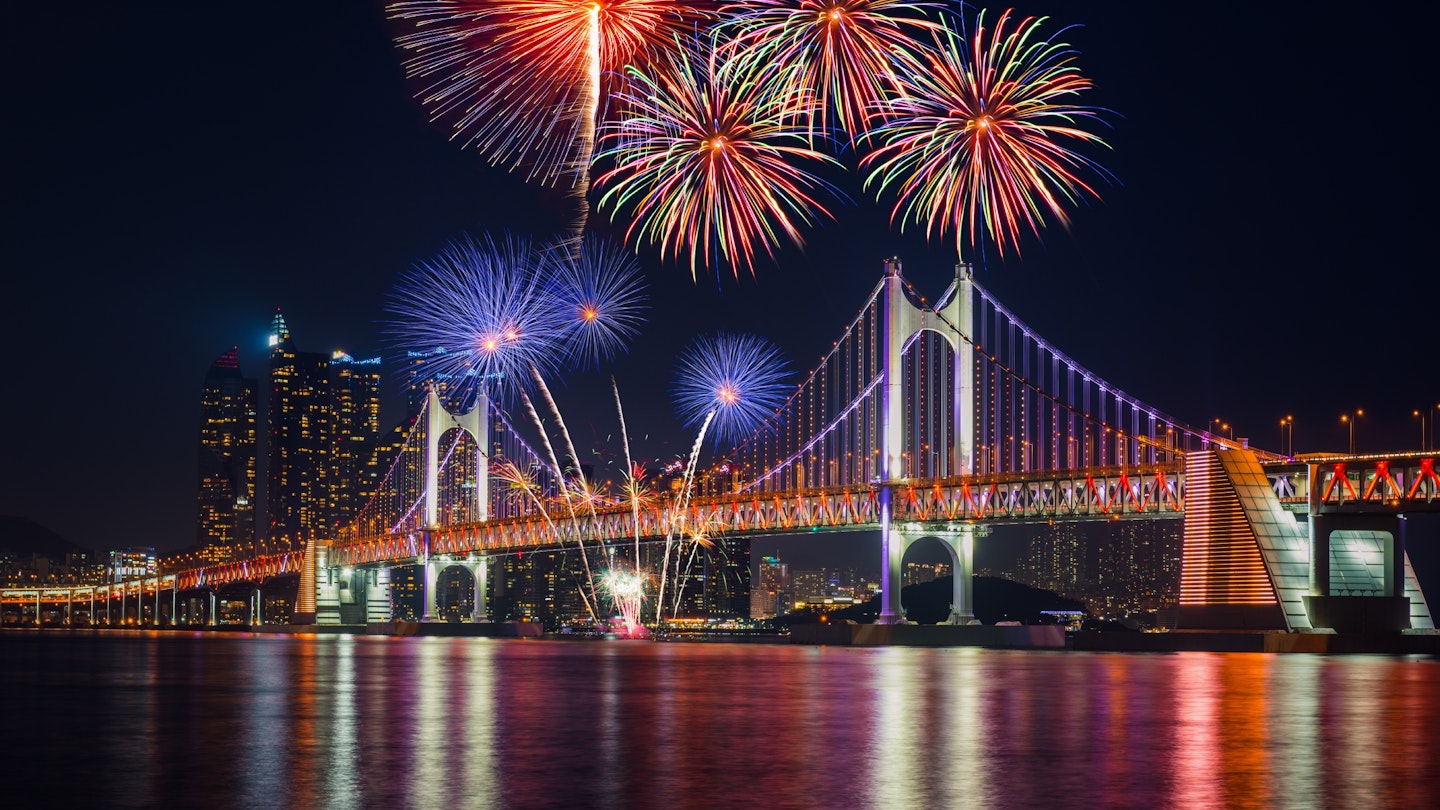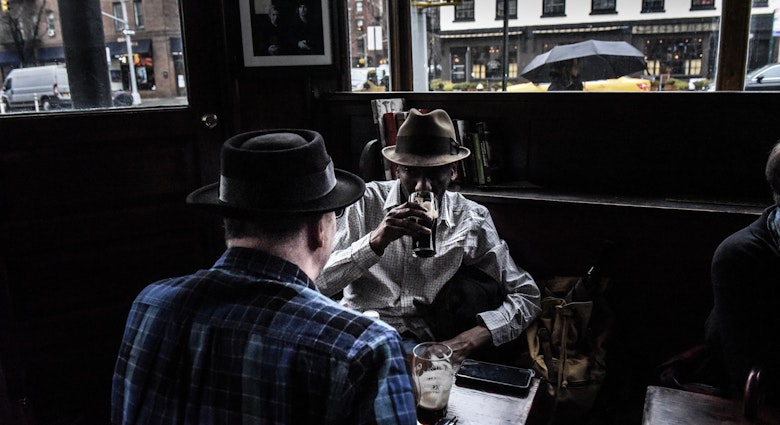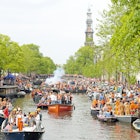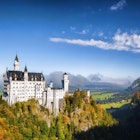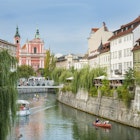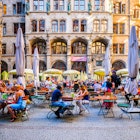Contemplating an Asian escape? Lonely Planet’s travel experts have combed the charming beach towns, scoured the cloud-snagging skylines and poked around the prehistoric temple complexes of the ever-changing Asian continent to bring you their recommendations of the most exciting spots to visit in 2018.
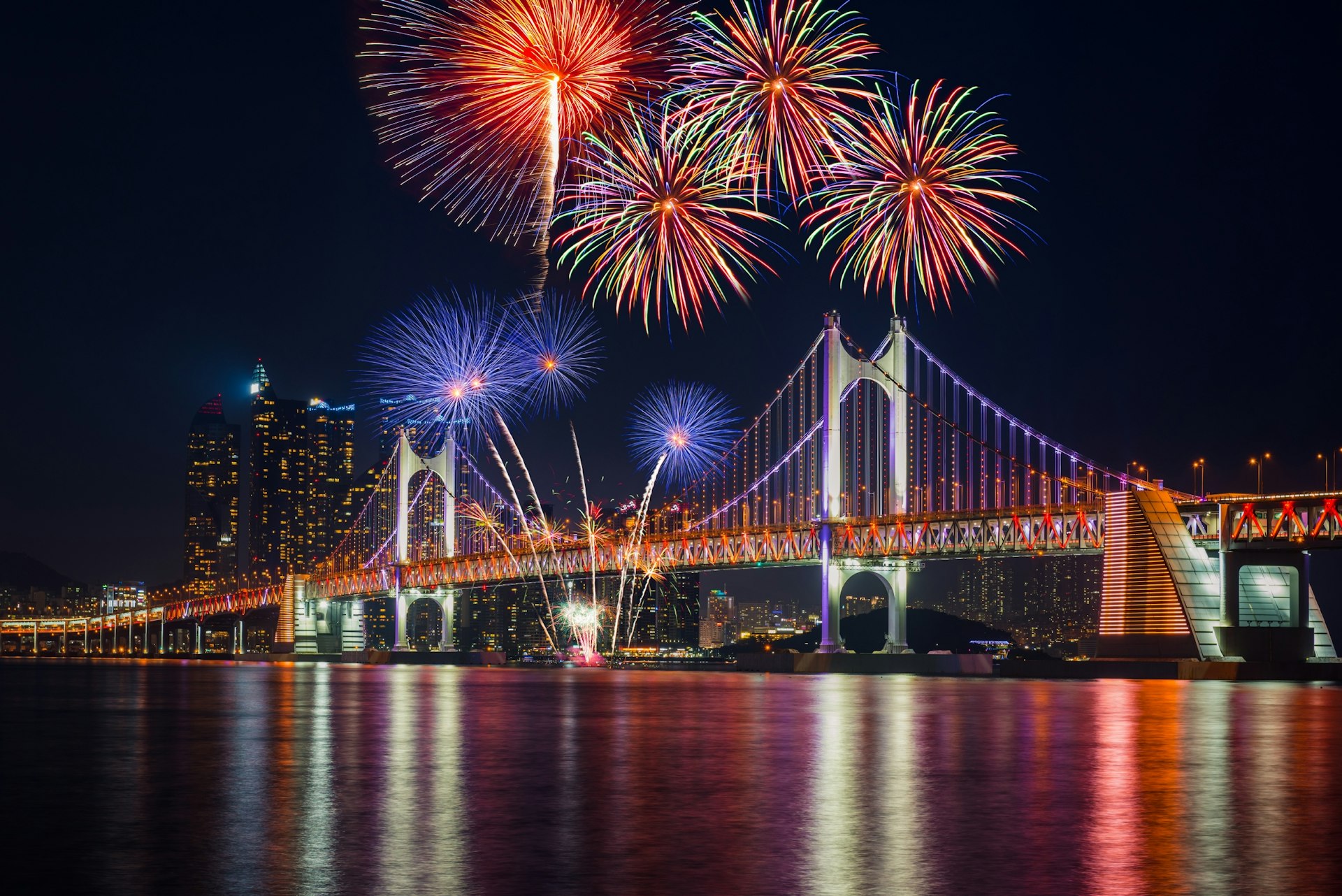
Busan, South Korea
In repose between mountains and sea, Busan is a stunning confluence of scenery, culture and cuisine. It’s long been domestically lauded as the country’s best beach getaway, but South Korea’s second largest city packs an eclectic offering of activities to suit all travellers: hike hills to Buddhist temples, settle into sizzling hot springs and feast on seafood still a-wriggle at Jagalchi, the country’s largest fish market.
Bestowed the title of East Asia Culture City for 2018, Busan will be at its most vibrant this year with a medley of colourful events showcasing the country’s cultural heritage, from street art festivals to traditional dance shows. Add in a prestigious international film festival and it seems this second-city is poised to steal the spotlight.
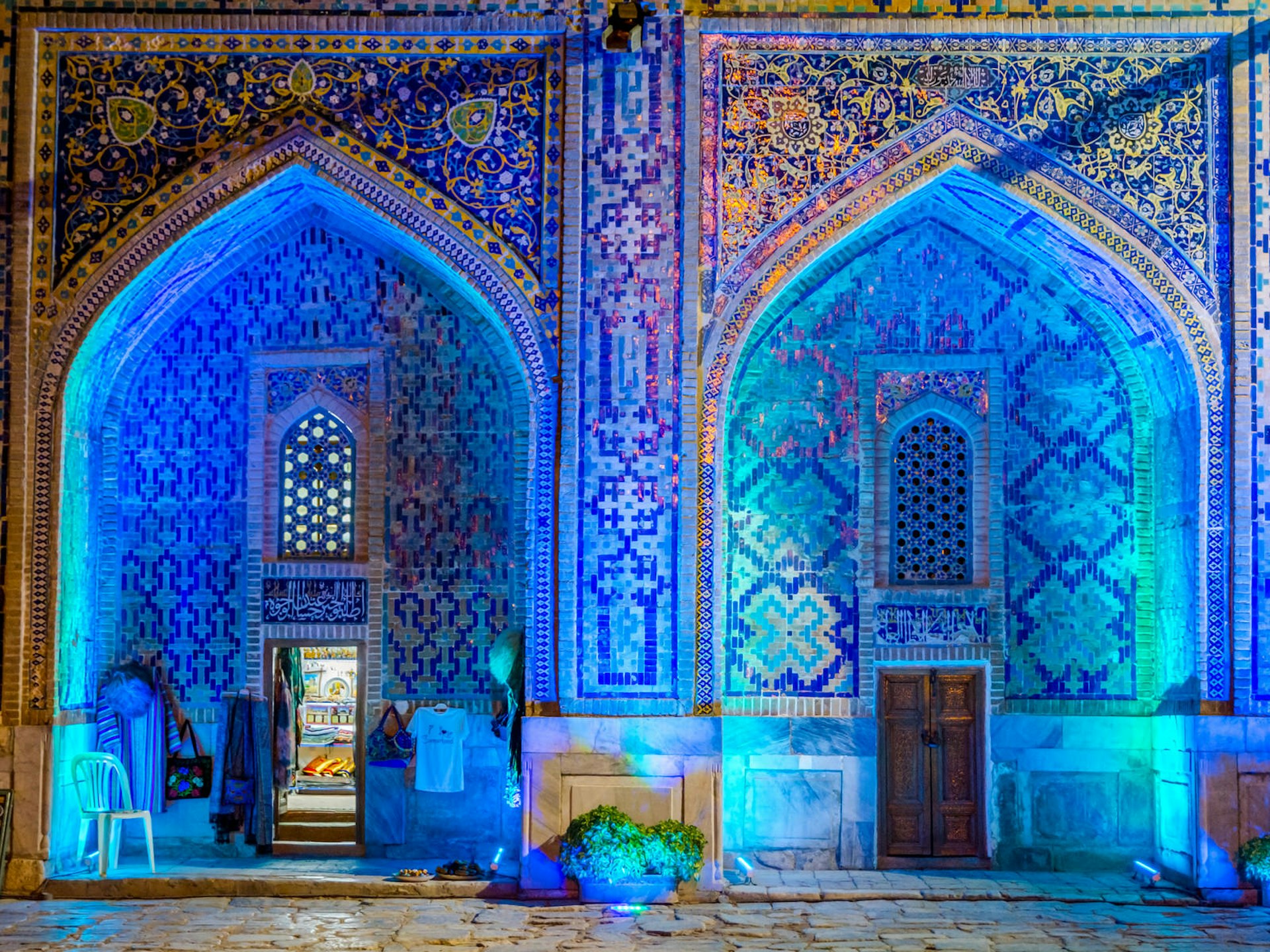
Uzbekistan
Uzbekistan has long held sway over travellers’ imaginations, with its dreamy mosaic-clad mosques and Silk Road lore. But the country has remained largely closed off to the wider world due to tight control following the end of the Soviet era. Thankfully, change finally appears to be afoot.
In late 2017, Uzbekistan took huge strides in opening up to tourism, announcing visa-free and e-visa schemes, new air routes and also extensions to its shiny high-speed rail network, making access to its collection of jewelled architecture and ancient cities easier than ever. Whilst the country lags behind its neighbours in a few ways, particularly regarding human rights, there is a feeling of hope that, as Uzbekistan enjoys the benefits of being welcoming to all, positive change will follow.
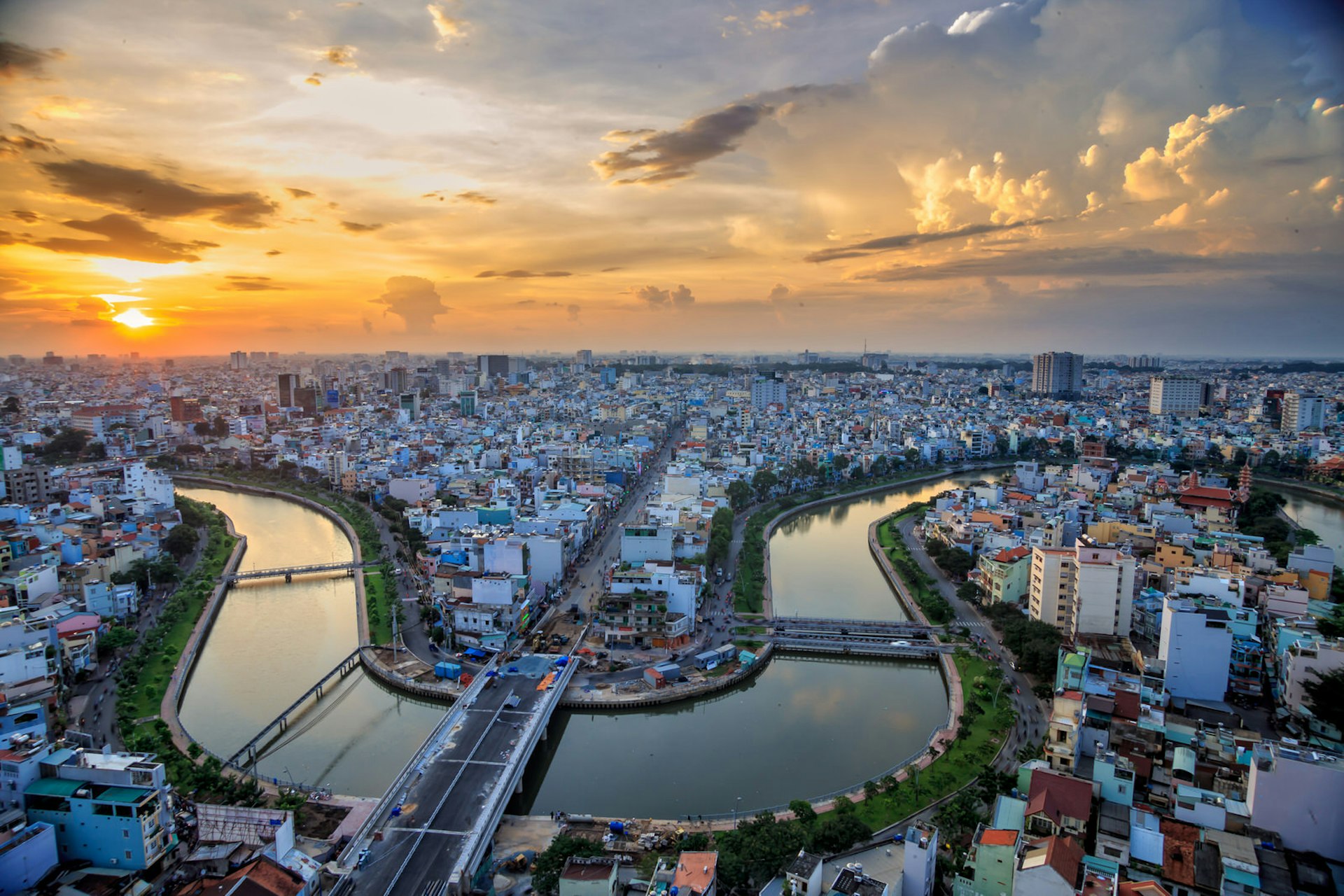
Ho Chi Minh City, Vietnam
Though long heralded as hip, Vietnam's southern supercity somehow keeps getting cooler. Aging apartment blocks are being colonised by vintage clothes stores and independent coffee shops, innovative breweries like Heart of Darkness and East West Brewing are fuelling one of the best craft beer scenes in Southeast Asia, and a selection of eclectic venues are strengthening the local music scene.
Add these recent developments to the city’s essential long-standing attractions like the War Remnants Museum, which details HCMC’s recent history in eye-opening displays, a pioneering street food scene and accommodation suited to all standards – not forgetting superb flight connections – and it appears this buzzing Asian megalopolis is in no danger of going out of style.
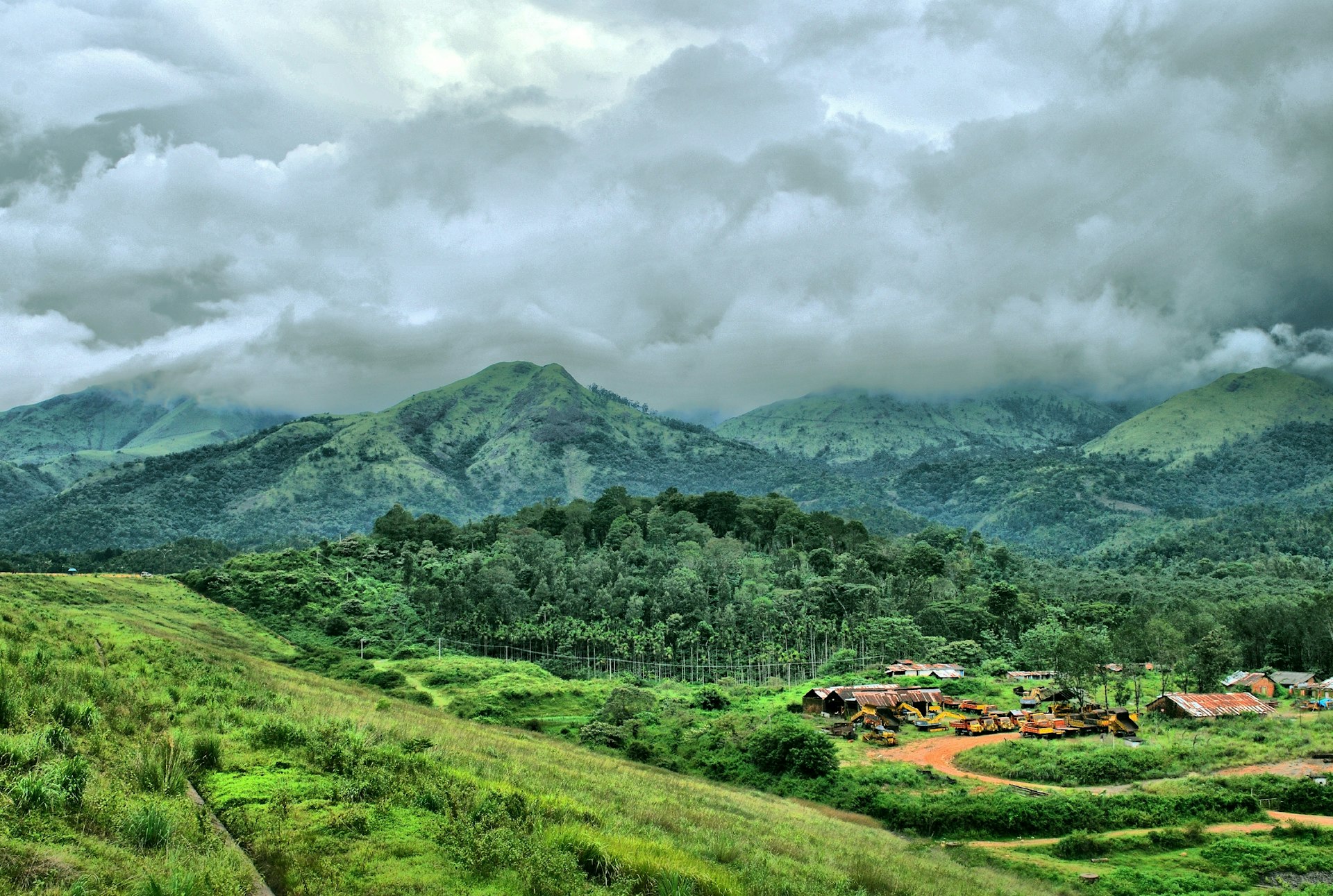
Western Ghats, India
India’s steamy southern highlands have never garnered the same column inches as the hill stations and Himalayan heights of North India, but the Western Ghats offer an atmospheric mirror to Shimla and Darjeeling, with added jungle appeal.
Traversing Tamil Nadu, Kerala, Karnataka, Goa and Maharashtra, these rugged hills are Unesco listed as one of the top spots for biodiversity in the world, protecting everything from wild elephants and tigers to the neelakurinji flower, which blooms only once every 12 years and will be painting the hills in purple livery from August to October 2018. Visit now and you’ll find coffee, tea and spice plantations, charmingly dated colonial outposts, thundering waterfalls, and even a steam-powered mountain railway, while evading the crowds who mob the northern uplands.

Nagasaki, Japan
For most international tourists, Nagasaki is synonymous with the tragic atomic bombing of August 1945. Remarkably, the city has converted the catastrophe into a concerted call for peace, exemplified by both the tranquil Nagasaki Peace Park , where a simple monolith marks the explosion's hypocentre, and the Atomic Bomb Museum, where hibakusha (atomic bomb survivors) make poignant pleas for international nuclear disarmament.
But Nagasaki’s identity transcends one violent act; for centuries Japan’s main foreign trade occurred through Nagasaki's old port, bringing a distinctive East-meets-West character and, notably, Christianity to the city, the influence of which is documented in a new museum housed in Japan’s oldest church. More leisurely tourist delights also abound, from the verdant harbour to the hiking routes that snake through the surrounding volcanic hills.
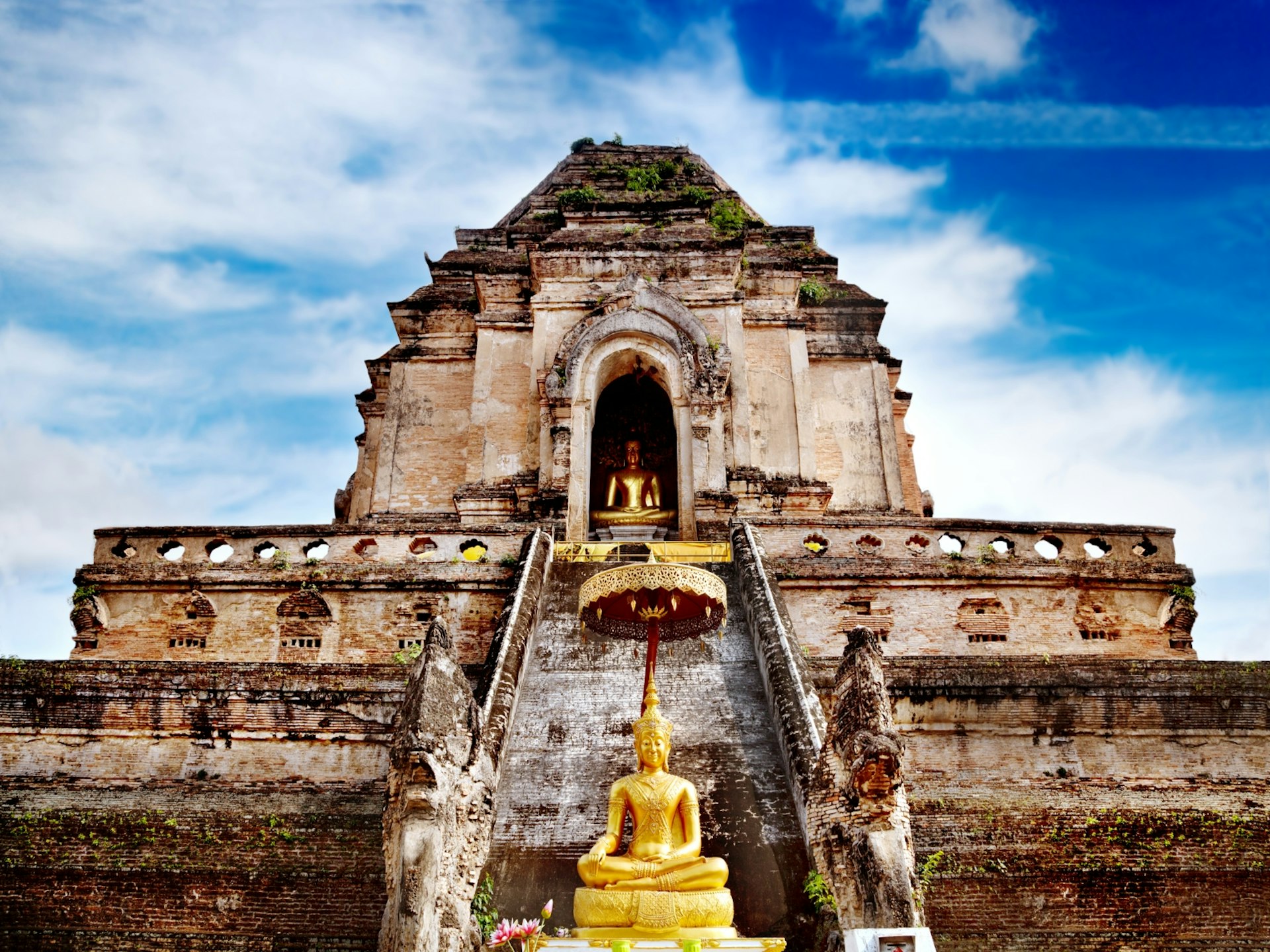
Chiang Mai, Thailand
With its legion of temples and grand, weather-worn city walls, the former capital of the Lanna Kingdom feels plucked from the pages of history, where visitors browse stalls of antique jewellery as the familiar scent of tilapia grilled in banana leaf fills the air.
And yet despite this aged feel, a young, creative population has taken up residency in the city, bringing an exciting buzz to the archaic alleyways. Now, alongside majestic, gold-painted chedis (stupas) are cafés known for their latte art, mural-walled restaurants specialising in experimental fusion cuisine and the newly-opened, award-winning MAIIAM Contemporary Art Museum, which, like Chiang Mai itself, draws plaudits for its masterful intertwining of traditional and modern influences.
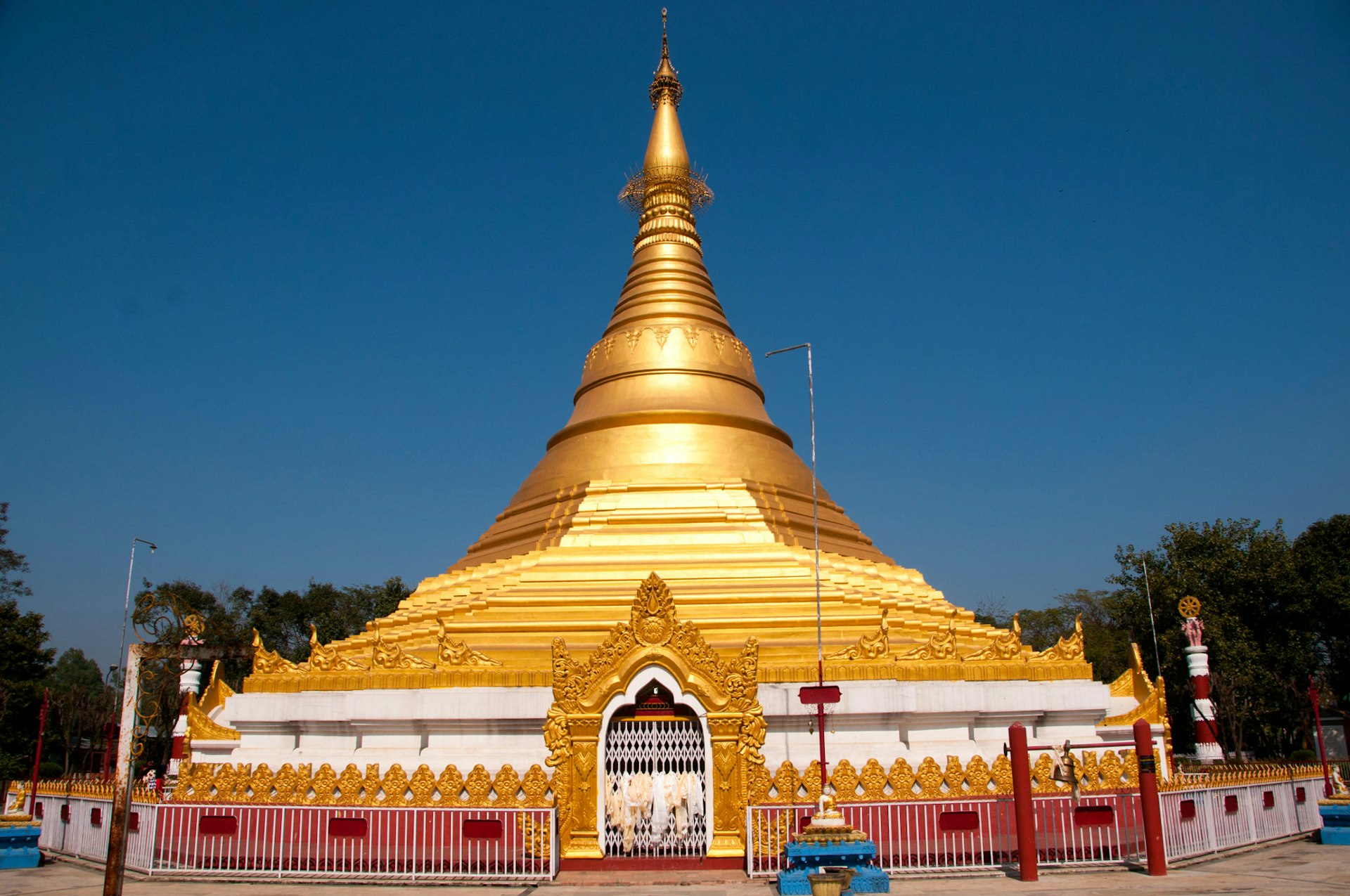
Lumbini, Nepal
For decades, Lumbini was somewhere travellers flashed through en route from India to Nepal, often unaware that they had passed within yards of the birthplace of the historical Buddha. Today, thanks to the efforts of the international Buddhist community, Lumbini is on the ascendancy, but despite its heritage, this sacred site remains a sleepy detour off the backpacker trail.
However, change is apace; a new international airport is under construction, offering a new, safer route into Nepal, and ever-more aweing temples are springing up. While these developments may finally be the catalyst that brings Lumbini the attention it deserves, the town’s cardinal draw will remain its tranquillity – embodied by the rare sarus cranes that stalk the wetlands around the World Peace Pagoda.

Arugam Bay, Sri Lanka
Despite Sri Lanka emerging as one of the world’s hottest travel destinations, Arugam Bay, a surf town on the country’s east coast, has miraculously managed to retain its cool. While holidaymakers swarm the country’s ancient citadels and hiker-strewn hill stations, here you’ll find barefooted boarders sprawled outside vegan cafes and scrawled signs on hotel doors reading: ‘gone surfing, back soon.’
Renowned as a long-time surf haven, the town boasts breaks to satisfy all levels, along with a number of schools to get everyone hanging 10. If the turquoise swells can’t tug you in, Arugam has authentically grown its on land offering, with an increase in beachside bars and makeshift music festivals; plus a handy proximity to Kumana National Park, home to leopards, elephants and crocodiles.
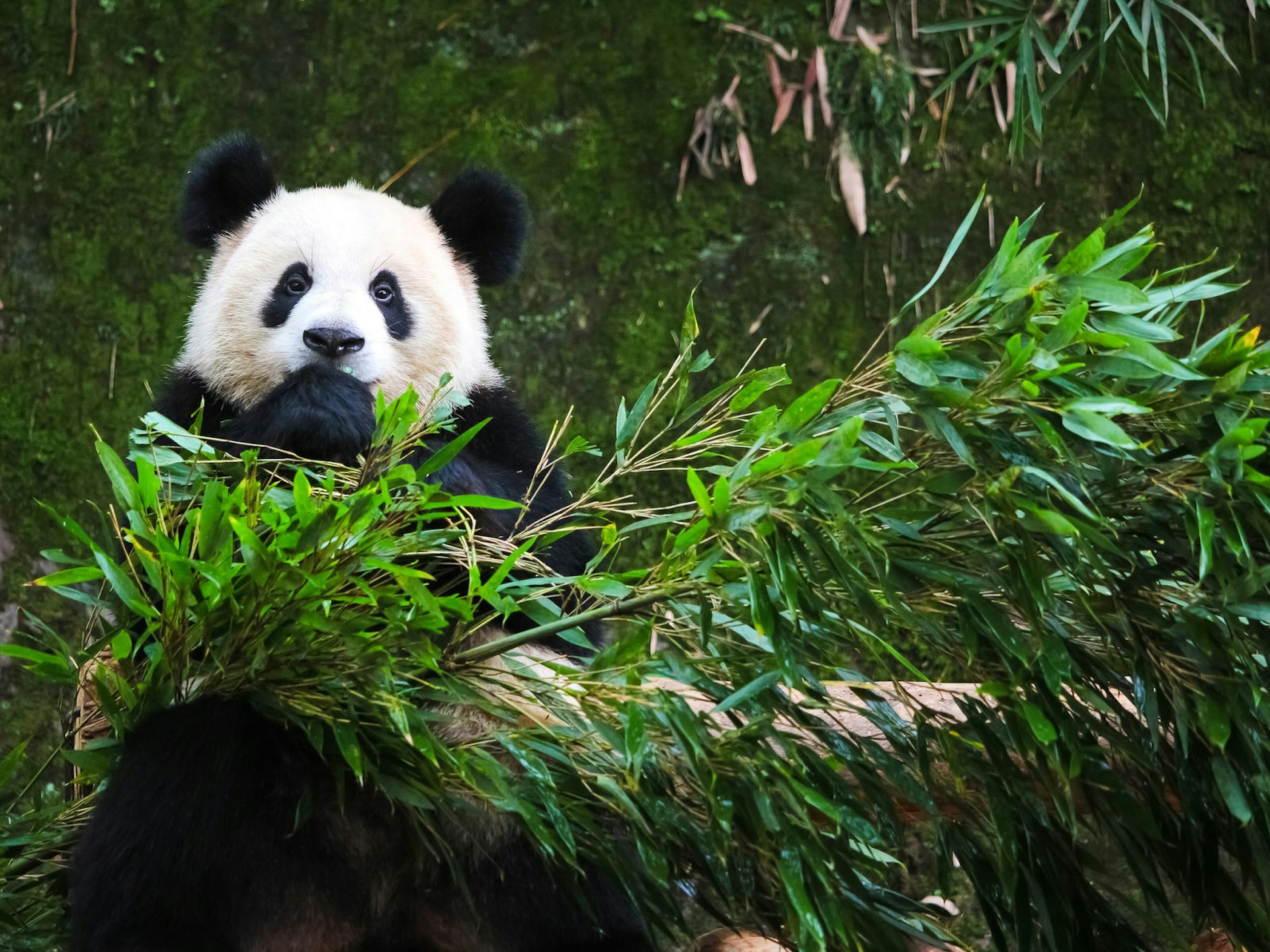
Sìchuān, China
Far-flung villages, towering skylines, giant pandas and fiery cuisine; Sìchuān province is a microcosm of modern China, and 2018 is bursting with reasons to go.
Cosmopolitan Chéngdū has become one of the country's design and tech hubs, which also means a mushrooming of luring brewpubs and boutique hotels. Starting in 2018, travellers will be able to ride the first section of the Sìchuān-Tibet Railway (which will eventually link Chéngdū to Lhasa in just 15 hours) west to visit time-frozen Tibetan villages dwarfed by dramatic mountain scenery. Up north, the exceptional Jiǔzhàigōu National Park has reopened to limited numbers of visitors after the 2017 quake, while down south spiritual experiences reign supreme: gain perspective surveying the Lè Shān Grand Buddha or climb Éméi Shān to absolve a lifetime’s sins.
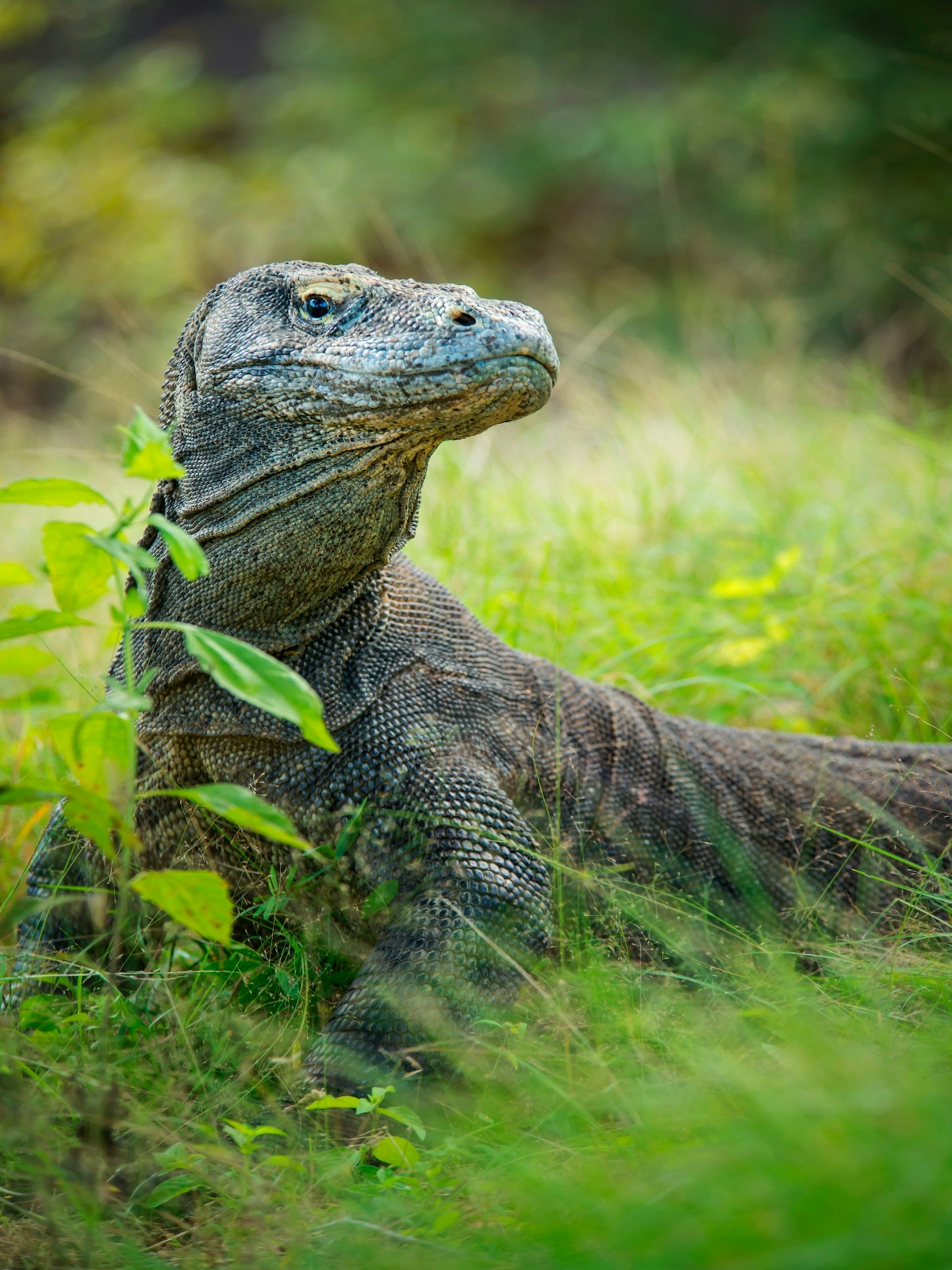
Komodo National Park, Indonesia
Home to the fascinating and formidable Komodo dragon, Komodo National Park is a nature enthusiast’s nirvana. Aside from laying eyes on the illustrious lizard, visitors to this cerulean-silhouetted archipelago in Indonesia's Lesser Sunda Islands can hike to hallowed viewpoints on Padar, sample laid-back beachside living on Kanawa and dive with a mind-boggling array of marine life in the reefs off Komodo.
New flight connections and liveaboards to gateway Labuanbajo have made the park more accessible than ever, prompting local authorities to examine ways to protect the Komodo species. Visitor caps and park fee rises are likely in 2018, but travellers should play their part by joining small, responsible boat trips to avoid overwhelming the park's guides and resources.
